Existing User Log In
New User Registration
Register for a free account to gain full access to the VGChartz Network and join our thriving community.



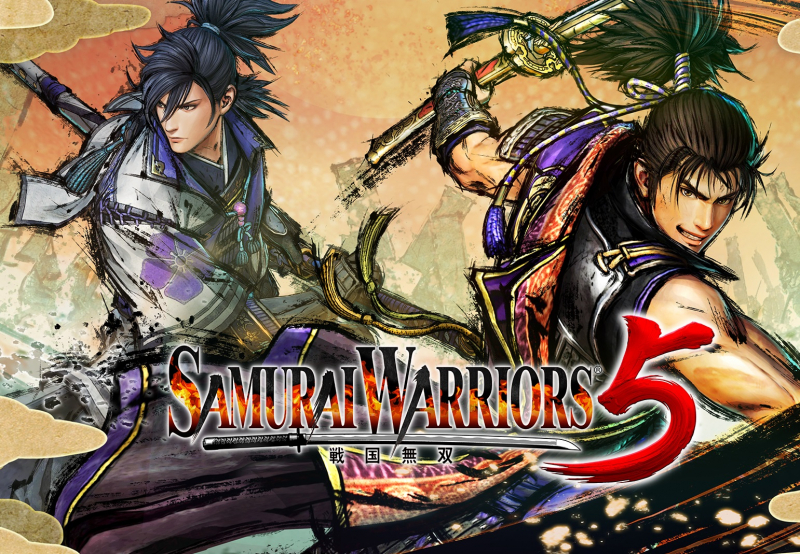

America - Front


America - Back

Koei Tecmo Games
Action
 (Add Date)
(Add Date) (Add Date)
(Add Date) (Add Date)
(Add Date)
| Owners: | 0 |
| Favorite: | 0 |
| Tracked: | 0 |
| Wishlist: | 0 |
| Now Playing: | 0 |
It’s been a pretty long time since we had a brand new mainline entry in the Samurai Warriors series; in 2017 we got the spin-off entry Spirit of Sanada, and before that there were revisions to Samurai Warriors 4, but it's almost seven years since 4 itself released. Enter Samurai Warriors 5, which takes place during the Sengoku period, an era of almost constant civil war in Japan. It was also when Nobunaga came to power, hoping to end the battles between various warlords and unify japan.
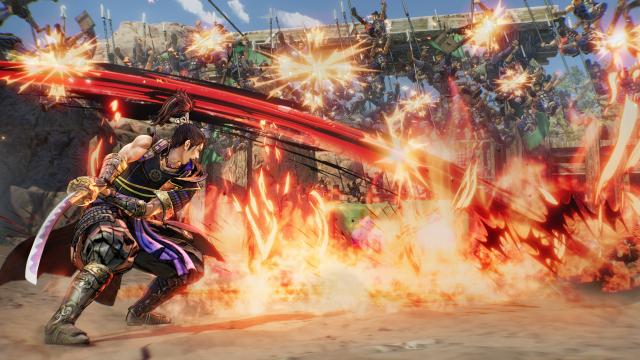
Samurai Warriors 5 is an attempt to re-imagine/reboot the series, with the hope of attracting new players and expanding the franchise's reach. The basic premise remains the same though, in that you take control of a key character in combat and try to help win a huge battle by taking down enemy officers, completing simple objectives (usually killing a particular person), and clearing out huge amounts of enemy units.
The story aspect (Musou Mode) has always been a bit hit and miss in the Samurai Warriors series, but you would at least always get to see multiple clans and, more often than not, have a wide roster of characters to pick from. Some would be hidden behind challenges, but it never felt like you were following just one person; rather you followed an eclectic cast of characters and their clans.
Things are a little different this time around. Samurai Warriors 5 gives you two key characters and their paths to choose from: Nobunaga’s path and Mitsuhide’s path. These are the only narratives in the game and, although you can pick different characters for most of the battles, the stories really focus primarily on Nobunaga and Mitsuhide.
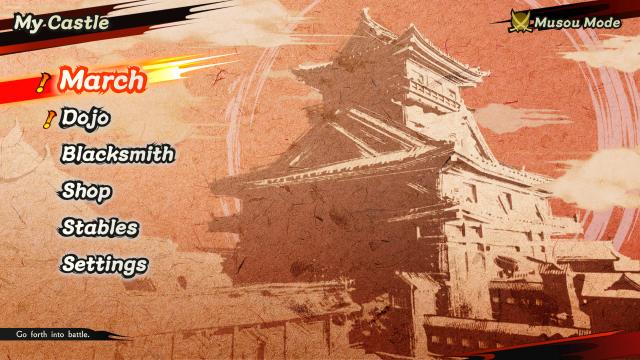
This has upsides and downsides. For my tastes it meant that several of my favourite warriors weren't really on show all that much, and when they were it was usually on the opposite side of the field trying to kill me. Characters with rich backgrounds are often left aside because of the almost single-minded focus on Nobunaga and Mitsuhide. That said, this allows Nobunaga and Mitsuhide to be well fleshed out and have strong character development - something usually absent from the series. It's great to see more attention paid to the characterisation of these lead figures, it's just a shame it came at the cost of the supporting cast.
Both Nobunaga and Mitsuhide’s paths are often interwoven, which means that once you've cleared one path you'll know most of the second path's major plot points, as well as how it all ends. If you do decide to play through the second path despite the narrative crossover, you'll also find yourself playing on extremely familiar maps, essentially re-doing missions you've already completed.
The two paths do have multiple secret missions that have special requirements for unlocking, but again these often take place on re-used maps, albeit ones where you'll play as the opposite side. This is a fun way of adding some variety to proceedings, but with these missions I found my characters were sometimes chronically under-levelled. This can be overcome by using 'Stock XP', which you can dump on characters to level them up quickly. It’s a useful work-around, but it can be frustrating having to rely on a limited use item to push up your levels.
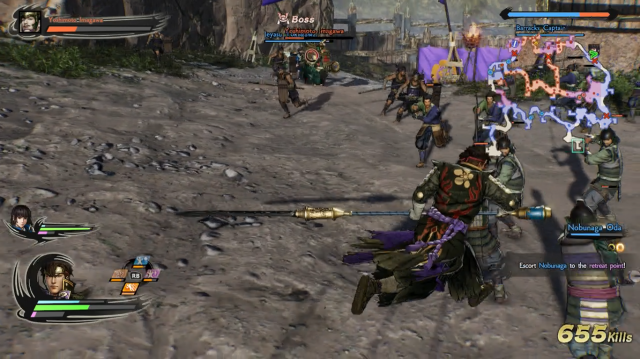
Since you also take two characters into most battles you can level up some of your weaker characters this way if you feel the need to. Having two characters playing simultaneously means you can also accomplish objectives pretty effectively. One weakness of this is that, when the AI is watching over the character you're not controlling, you can only assign one of two options: Follow (the character heads with you to the objective) or Stay (the character stays put). This means that, when there are multiple objectives, you can’t direct the AI to a specific one; you can have them target certain enemies but not certain objectives. This becomes a major problem and source of frustration towards the end of the game.
Once you've completed Musou Mode you'll unlock the Reverie Chapter. This is a reimaging of history, and each mission on offer here has certain specific requirements you need to meet before you can play it (usually getting S rank on a certain mission in Musou Mode). These levels are much harder than the ones found in the story campaign, and usually pose a significant challenge, making them great end-game content.
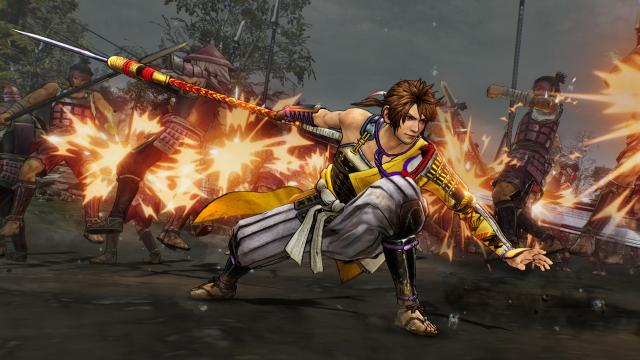
Combat follows the tried and tested Omega Force hack 'n slash style, where you take on hundreds of basic enemies, including the occasional super annoying unit (most notably rifle units, which can juggle you if there are a few of them). By and large you'll be able to cleave through hundreds, often thousands of enemies without taking much damage. Combos spice things up a bit - they're easy enough to learn and you can end them with various power attacks. Samurai Warriors 5 also introduces ultimate skills, which can be equipped on characters; these are especially good for taking down particular units, like cavalry and shield squads. They also make quick work of generic enemies that happen to get caught up in them. It's a welcome addition to series, making the gameplay slightly more exhilarating and dynamic.
Each character can use any weapon type, which is helpful for changing their fighting style to suit the way you prefer to play. You do sometimes have to really consider what attachments you're adding to your weapons though, in order to buff certain characters' strengths or make up for their weaknesses (for example, some of the ninja characters have really low health, so it's advisable to channel in a lot of vitality weapon attachments to keep them alive).
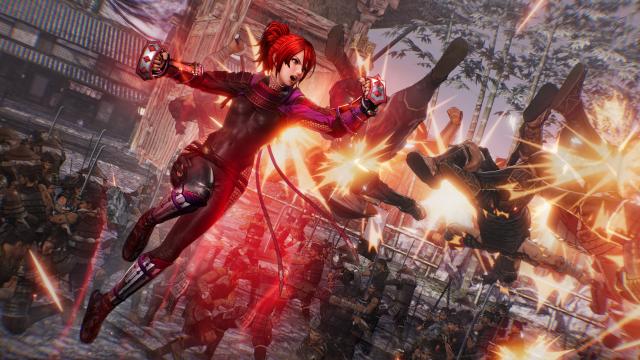
There are 37 characters to pick from in total, and just as in previous entries there are requirements for unlocking certain characters. However, these requirements aren’t always obvious. It would be very helpful if the game told you how to unlock each character, but so far as I can tell it doesn't show this anywhere. The 37 character roster is also a little bit disappointing - it's a decent figure in isolation, but a huge step down compared to Samurai Warriors 4's 55 playable characters.
Finally, and while the game is set in a specific time period that would ordinarily limit options in this respect, Omega Force has traditionally been willing to prioritise creative freedom over historical consistency, which means that they could (and I think should) have included a lot more samurai. Even one of the most well-known samurai, Date Masamune (who was alive during the Sengoku period), doesn't get a mention.
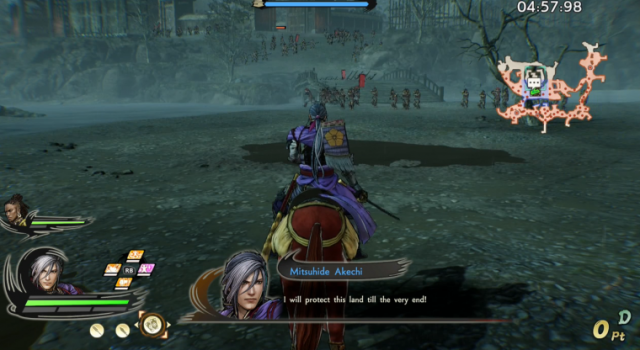
Playing this Xbox One version of the game on an Xbox Series X, I came across a number of bugs. One, on the second mission, cleared the UI upon completing the level but the game never progressed. This forced me to restart and have to re-do the mission. Another, much more annoying issue, crops up on the final mission of Mitsuhide’s path; after assaulting a castle the inner room opens up, leading to a boss fight, but if you’re not with your partner then they’ll wander in and the door will shut behind them. So my weaker, AI-controlled character was in the middle of a boss battle while I was stuck outside! I came across a similar issue in the Reverie Chapter too. Regardless of whether this is a bug, an overlooked and unintentional design flaw, or a frustrating feature, it really shouldn't be part of the game in my view.
Aside from Musou Mode and Reverie Chapter, there's also Citadel Mode, which works quite similar to a traditional horde or survival mode. Here you have to defend a castle in a variety of different scenarios, and can summon squads of AI to help, including spearmen, ninjas, and firebombers. Playing a few of these missions with different partners unlocks special mini cut scenes that you can view, although there are so many of them that it eventually become a bit tedious trying to unlock them. That said, these missions are only about five minutes long on average, so they're not a big time sink, unlike most survival modes.
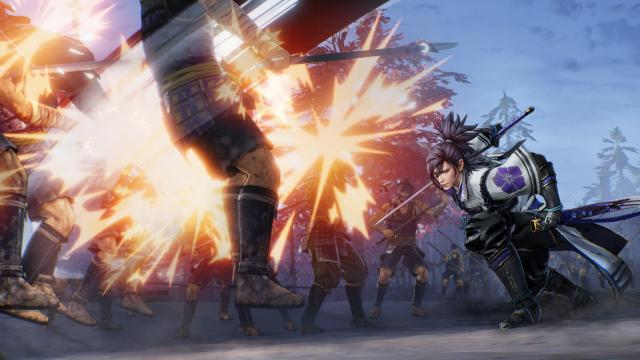
If you're a fan of Omega Force’s previous games then you’ll no doubt enjoy Samurai Warriors 5, but if you're looking for a completely fresh or even brand new approach to Samurai Warriors then you'll find yourself disappointed.
Nearly a decade on from its last full Samurai Warriors release, it's clear that Omega Force still doesn’t have half as much confidence in this franchise as it does Dynasty Warriors. The developer has made a small shuffle towards trying something new by focusing on two character paths in Musou Mode and including some gameplay spice with the new ultimate skills, but for an attempted re-imagining it lacks ambition, which is somewhat ironic for a game focused on the great ambition of unifying Japan!









